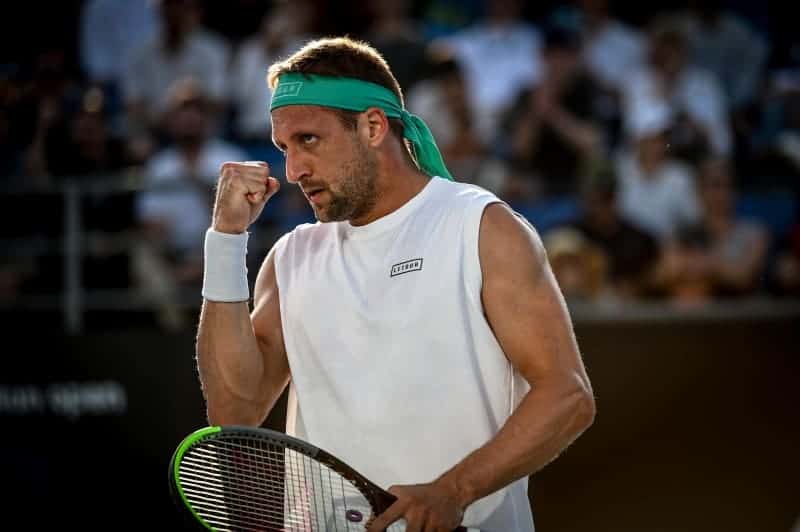To play tennis at the elite and highest level, you must be able to play rallies of high physical intensity for three hours or more, with only modest breaks. You need to be able to hit the ball hard and accurately, and you must be able to continue to do this throughout the match, not just in patches. With physical demands like this, a well-designed and challenging physical training program is essential.
This will consist of running, jumping, agility, core, and strength work. Although not all tennis players appear overtly muscular, they will all be lifting weights to develop the kind of strength they need.
Weightlifting is an essential part of tennis training. Weights can be used to help build an appropriate degree of strength in several key muscle groups. Periodization of training is important: weight training should be carried out at the right time to support tournament performance.
Although the aim is not to build prominent muscles, under-16s should avoid excessive weight training to reduce injury risk.
The Importance Of Weightlifting For Tennis
You do not need to be massively bulky and muscular to be a good tennis player. Nonetheless, you need to be strong in many areas to prevent injuries resulting from the stress that the game puts on your body. Tennis players will do a substantial amount of weight training to build up the kind of durability they need.
One particular area where weight training is crucial is in the evening up imbalances. Tennis is a very one-sided sport, especially for players who use a single-handed backhand. This will lead to them becoming much stronger on one side than the other, and this unevenness can lead to injury. Gym work can redress the balance by strengthening the weaker side.
Weight training can strengthen the muscles around the joints which are subjected to the most stress in tennis, such as the shoulder and knees, significantly reducing the likelihood of injury. Weightlifting can build leg strength in general, which will help hit powerful serves (to which the leg drive makes a big contribution).
In addition, weights can be used in improving core strength and muscle endurance, which play a crucial part in performing well and avoiding injury.
What Exercises Are Good For Tennis Players?
Tennis players will benefit from a well-designed program that incorporates explosive and speed-strength, as well as starting strength and maximal strength. If they want to be quick off the mark, they need to train by moving mid-range loads quickly.
If, on the other hand, they really want to absorb the kind of force that they will experience when decelerating after running down a challenging wide ball, they need to do eccentric strength exercises, which include controlling a heavy load. More dynamic exercises like plyometrics can be very useful in helping players to develop on-court power and speed.
The exercises which are best for any specific player will depend upon their playing style and injury history. Four exercises that are commonly used, some of which are relatively static and some dynamic, are squats, deadlifts, medicine ball throws, and plyometric step jumps. These will all be likely to feature in a well-designed training program. Still, you should consult a physical trainer to get a personalized routine if you are serious about making improvements.
When Should Players Lift Weights?
Periodization is crucial for tennis players, as, when they are competing, they will not be able to undertake their full strength training program. They will need to set aside training blocks in which they can make physical improvements. The bulk of their strength training needs to be done at the beginning of their pre-season training block when they will be doing little or no on-court training.
Towards the end of pre-season training and in the early part of the season, they need to focus on the more dynamic ‘power’ exercises, where they move a modest load quickly. During the season, they should try to fit in one strength session and one power session most weeks to maintain conditioning.
In general, it is definitely not a good idea to do strength training and play tennis on the same day, as your muscles need to recover. Similarly, just before a tournament, you should let your training taper off a little to ensure that you are fresh.
At What Age Should Tennis Players Start Lifting?
There is plenty of strength training that can be done by junior tennis players, but their growing bodies are at risk of injury if they lift heavy weights. Players under the age of 16 should focus on bodyweight exercises and use resistance bands and medicine balls. From 16 onwards, they should be ready to gradually increase the weights they train with.
Why Are Players Not Muscular?
This is, of course, a matter of perception. Players like Novak Djokovic are highly trained and muscular, but not bulky. John Isner is often used as an example of a player with little obvious muscle, but he has sufficient strength to avoid injury and uses his long levers well.
Players do not benefit from being bulky, as the key in tennis is to be quick and flexible. If you can move the racket quickly, you will generate power- you do not need the physique of a bodybuilder. Lower body strength is important, as there is a lot of stretching and lunging involved, and the legs are crucial in generating speed and power, so players will generally have strong, muscular legs.
A lighter upper body will lend itself to the flexibility needed and put less stress on joints like the knees. In essence, tennis players need to be light, strong, and flexible, and bulking up and becoming too muscular would not be helpful.
Final Thoughts
Weight training is an important and crucial part of keeping players healthy and helping them perform at their best. If you are serious about your tennis, ask a physical trainer to devise a program for you.

